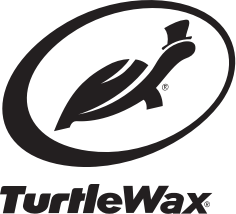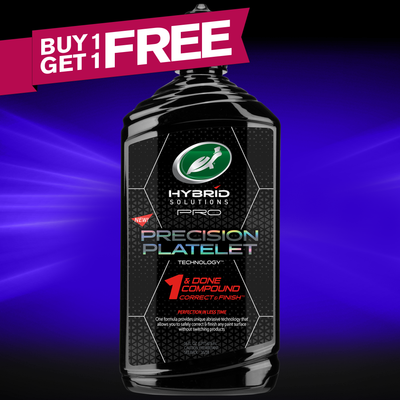
-
Exterior
-
Interior
Featured
- Hybrid Solutions
-
Car Care Kits
Collections
- Accessories
-
REWARDS
Earn Points Today
-
Trade Portal
Wholesale Partnerships
- Home
-
Exterior
- Buy One Get One Free Deals
- New
- Best Sellers
- Problem Solvers
-
Wash
- extreme foam
- heavy duty cleaners
- wash & wax one step
- waterless
- pre-wash valeting range
- wash valeting range
- ph neutral car wash
- car windscreen cleaner
-
Wax, Seal & Coat
- coatings
- detailer
- liquid
- one steps
- paste
- sealants
- spray
- wax speciality
- spray wax and sealant valeting range
- Paint Correct
-
Restore
- bug & tar removal
- headlight restoration
- metal & chrome finish
- restore scratch repair
- restore speciality
- trim restoration
- Wheel & Tyre
-
Interior
- Buy One Get One Free Deals
- New
- Best Sellers
-
Cleaners & Disinfectants
- interior detailers
- disinfectant
- protectants
- heavy duty cleaners
- multipurpose cleaners
- interior valeting range
- Carpet, Mats & Upholstery
- Leather Care
- Odour Elimination
- Glass
- Hybrid Solutions
- Car Care Kits
- Accessories
- Rewards
- Learn
- Trade Portal
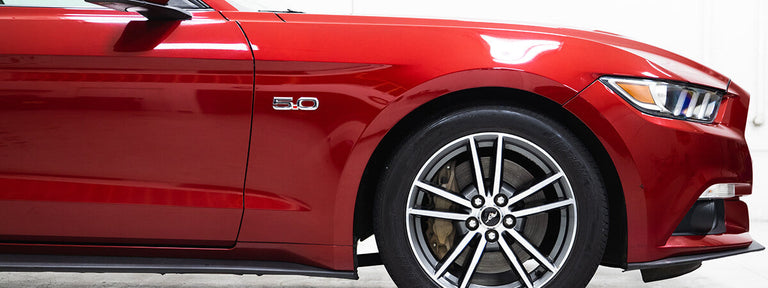
How to Find a Car Scratch and Paint Defects When Detailing
In this article you will learn:
- How to tell if you have paint defects in your vehicle’s paint
- The differences between embedded contaminants and paint defects
- How to remove a car scratch, paint defects or embedded contaminants from the clear coat
If you’re new to DIY detailing, you may not understand some of the terms that detailers use when they’re talking about paint correction. You may be confused when you read the phrase “bonded contaminants” in a blog or hear the pros mention “paint defects” in a YouTube video.
Before we get into the nitty-gritty of how to restore your scratched or damaged paint job, let's take a moment to define some of these terms:
A paint defect is any damage to your vehicle's paint, including scratches, swirls, oxidation or paint transfer.
Bonded contaminants are any contaminants that have become stuck or embedded in the clear coat, the clear, outermost layer of your vehicle’s paint. Most of these contaminants are invisible to the naked eye.
Now that you have a clearer understanding, let's walk through the steps of how to identify and correct these issues!
How to identify bonded contaminants
As we mentioned earlier, bonded contaminants are small soils that have become embedded in your vehicle’s clear coat. These soils may include rail dust, bits of sand, road debris or any other pollutant sharp enough to penetrate the clear coat. Regardless of how well you wash your car, bonded contaminants won’t come clean with regular car shampoo. Chances are your vehicle’s paint is full of bonded contaminants right now.
Because of how tiny these particles are, identifying when your car has bonded contaminants can be tricky. We know a trick that makes it much easier:
Place a zippered sandwich bag over your hand like a glove. Then, lightly glide your hand over your vehicle's painted surfaces. The paint should feel smooth like glass, but it’s more likely that you’ll notice small bumps or a gritty texture—a telltale sign that you have bonded contaminants in the clear coat.
It’s important to remove bonded contaminants from your car before you apply any sort of wax or ceramic coating. Otherwise, you'll be sealing dirt and other contaminants directly into the finish, which can make your vehicle’s paint appear dull and muted. Plus, if your wax or ceramic coating doesn’t adhere directly to the paintwork, it won’t look as smooth or last quite as long.

Removing bonded contaminants from the clear coat
To remove bonded contaminants, also known as decontaminating the finish, you’ll need to use a clay bar or mitt and some clay lubricant to manually pull these abrasive soils from the clear coat. Apply the specified amount of lubricant to the clear coat and your clay bar or mitt, working in 60 cm x 60 cm sections of the clear coat. Be sure to knead the clay or rinse your mitt regularly as it picks up contaminants, continuing to work your way around the car. Once you’ve finished decontaminating the finish, you’re ready to polish away any paint defects!
For more detailed, step-by-step instructions on how to use a clay bar or mitt, be sure to check out this helpful guide.

How to identify paint defects
Paint defects result from the everyday wear and tear of our vehicles. Whether they’re scratches, swirls, spiderwebbing, oxidation, pitting or paint transfer, most defects are pretty noticeable; but, in case you’re unsure, here’s a good rule of thumb: if it won’t come clean with a wash or clay treatment, it's most likely a paint defect.
The best way to go about scratch repair and correcting paint defects is to give your vehicle a good polish to minimize their appearance. If you’ve never used a car polish before, we’re not talking about a shiny coating for your paint; car polish is a fine- grit rubbing compound that removes an incredibly thin layer of clear coat to erase scratches, swirls and other paint defects. Many of these polishing compounds come as part of a scratch repair kit along with several cutting pads, a microfiber cloth and other scratch remover products.
Once you’ve removed the damaged, outer-most layer of the clear coat, your vehicle will look just like it did when it rolled out of the factory!

Correcting scratches and paint defects
Start by closely examining the paint surfaces of your car, checking for scratches, swirls, cloudiness or any other damage to the paint.
If you only have a light scratch here and there, or one section of particularly deep scratches and swirls, use a scratch and swirl remover, like Turtle Wax Scratch Repair & Renew, to correct the scratched area.
Or, if you’re dealing with more widespread damage, like minor scratches and swirls across the entire car, we recommend using a polishing compound formulated for more holistic paint correction, like Hybrid Solutions PRO 1 & Done. It’s the ultimate compound, correcting any severity of paint defects. Just pair it with the appropriate cutting pad for a super smooth finish and a deep, reflective shine.
Apply the polish with a dual action polisher or by hand, if you prefer. Polish one panel at a time, then wipe away any excess polish using a fresh, microfiber towel. For the best results, start at the roof of your car and work your way down and around, finishing with the lower panels. If you used a polish and built-in wax, like Hybrid Solutions Ceramic Polish & Wax, then your job is done! If you used a polishing compound without wax, protect that beautifully restored finish quickly with a spray wax like Hybrid Solutions PRO Flex Wax.
For a more detailed, step-by-step guide on how to correct scratches and swirls, check out this handy article.
Now that you have the low-down on bonded contaminants and paint defects, you’re much closer to speaking the language of professional detailers—and giving your vehicle an even more stunning, showroom look!

Hybrid Solutions Pro 1 & Done Professional Polishing Compound Correct & Finish™ 473ml
- BUY ONE GET ONE FREE AVAILABLE FOR A LIMITED TIME - Simply add to cart
- Can not be used in conjunction with any other discount code
- Performs as a heavy-duty compound or a light polish depending on which pad you use
- Infused with aluminum oxide abrasives for up to 1000 grit cutting strength
- Precision polishing platelets glide gently over your car exterior to prevent additional scratches and swirls
-
Low Stock
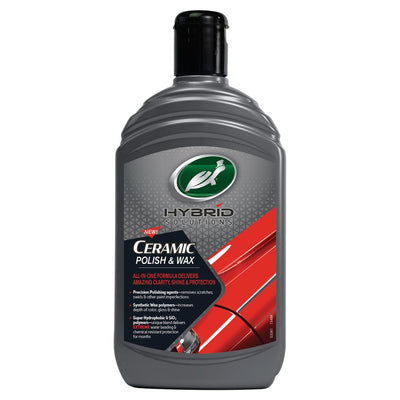
Hybrid Solutions Ceramic Polish & Wax 500ml
- All-in-one car wax polish delivers the benefits of three ultra-premium products – polish, wax and ceramic coating – in a simple step
- Precision platelet technology removes light swirls, scratches and paint transfer for easy surface restoration
- Hydrophobic SiO2 ceramic coating delivers incredible water-beading, chemical-resistance and a jaw-dropping, wet-look shine
-
Low Stock
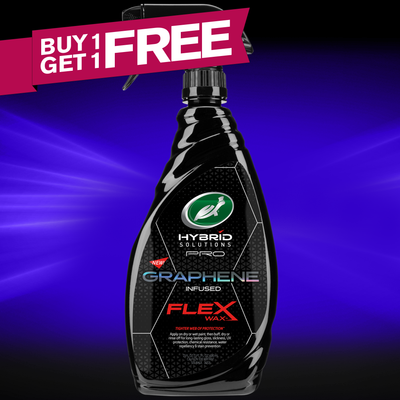
Hybrid Solutions Pro Graphene Flex Wax 680ML
- BUY ONE GET ONE FREE AVAILABLE FOR A LIMITED TIME - Simply add to cart
- Can not be used in conjunction with any other discount code
- Professional-grade car wax spray shines and protects both wet and dry car surfaces
- Graphene flex wax coating prevents scratches, swirls, streaks and oxidation to any nonporous, exterior surface
- Hydrophobic formula promotes extreme water beading and chemical resistance for superior protection and faster dry time
- Simple spray-and-wipe formula for quick and easy, on-the-go application as a rinse wax, dry wax or even both!
-
Low Stock

Hybrid Solutions Pro 1 & Done Professional Polishing Compound Correct & Finish™ 473ml
- BUY ONE GET ONE FREE AVAILABLE FOR A LIMITED TIME - Simply add to cart
- Can not be used in conjunction with any other discount code
- Performs as a heavy-duty compound or a light polish depending on which pad you use
- Infused with aluminum oxide abrasives for up to 1000 grit cutting strength
- Precision polishing platelets glide gently over your car exterior to prevent additional scratches and swirls
-
Low Stock

Hybrid Solutions Ceramic Polish & Wax 500ml
- All-in-one car wax polish delivers the benefits of three ultra-premium products – polish, wax and ceramic coating – in a simple step
- Precision platelet technology removes light swirls, scratches and paint transfer for easy surface restoration
- Hydrophobic SiO2 ceramic coating delivers incredible water-beading, chemical-resistance and a jaw-dropping, wet-look shine
-
Low Stock

Hybrid Solutions Pro Graphene Flex Wax 680ML
- BUY ONE GET ONE FREE AVAILABLE FOR A LIMITED TIME - Simply add to cart
- Can not be used in conjunction with any other discount code
- Professional-grade car wax spray shines and protects both wet and dry car surfaces
- Graphene flex wax coating prevents scratches, swirls, streaks and oxidation to any nonporous, exterior surface
- Hydrophobic formula promotes extreme water beading and chemical resistance for superior protection and faster dry time
- Simple spray-and-wipe formula for quick and easy, on-the-go application as a rinse wax, dry wax or even both!
-
Low Stock
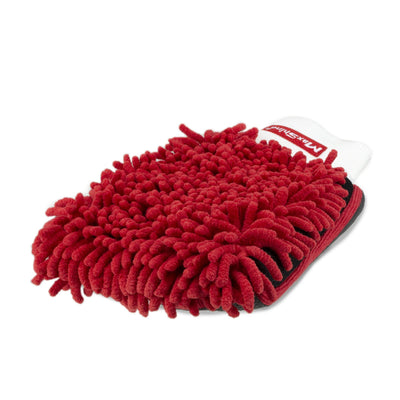
MaxShine Clay Mitt
£15.00
was £35.00
- Dual-action car wash and car clay mitt cleans and decontaminates your car
- Synthetic substrate lifts stuck-on soils and and subtances from the clear coat – use 20-40 times before you need to replace
- Plush, durable loops of chenille microfibre effortlessly lift dirt and soils – use to scrub your wheels and painted surfaces
- Releases dirt and soils for easy rinsing
-
Low Stock
WANT MORE TURTLE WAX?
Subscribe for your newsletter and the rewards will be in your inbox before you even get there
Latest
News, events and insights from Turtle Wax® worldwide
Offers
Exclusive offers and discounts on Turtle Wax® products
Rewards
Regular treats and surprises for all subscribers
Thanks! You should receive a confirmation email shortly.
